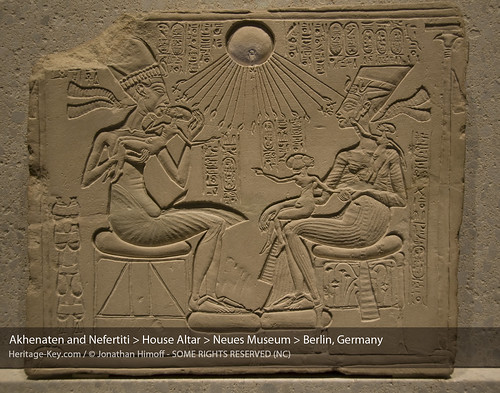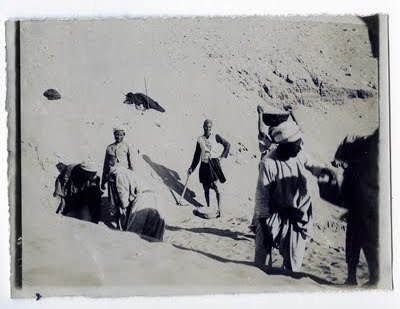This beautiful stela from Amarna encapsulates the Amarna artistic style and the religion of the Aten in one place. It is not the only one of its kind, but it is one of exceptional workmanship and is in remarkable condition. Along with the bust of Nefertiti, it’s one of the highlights of the newly-opened Neues Museum in Berlin. The stela, or house altar, shows a relief of the royal family, with Nefertiti on the right, sitting opposite and facing her husband Akhenaten, with their three eldest daughters, Meritaten, Meketaten and Ankhesenpaaten, upon their laps. They are all seated beneath the…
-
-
Amidst the charming Victorian cases of jewellery along the walls of the larger room in the Petrie Museum is the Framing the Archaeologist exhibition (follow their blog here); a series of framed photographs from 1880 1900 categorised into excavation sites of Petrie; Giza 1800-1883, Delta sites 1883-86, and Al Arabar Al Madfunda (Abydos) 1899-1900. Each framed image is accompanied by a quote from a contemporary report or letter, giving some insight into the people depicted and their activities. One of the first pictures in the exhibition is the fabulous image of a young Petrie leaning casually against the wall of…


